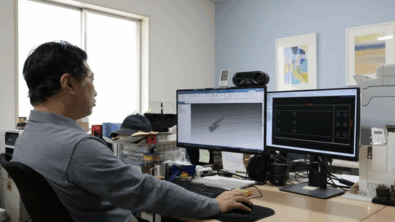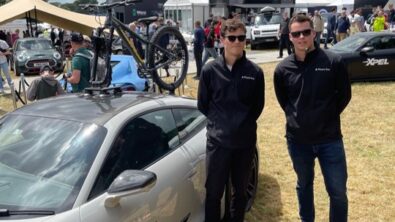Example of Mixing Synchronous and Ordered

 I came across a cool technique this week while talking with Art Patrick about a part I was trying to make for a sample model. It has 3 mount points, and a bar frame connecting the mounts. In the end, Art had it set up so that the mount points were synchronous, and a 3D sketch connected the pieces, and drove some ordered sweeps.
I came across a cool technique this week while talking with Art Patrick about a part I was trying to make for a sample model. It has 3 mount points, and a bar frame connecting the mounts. In the end, Art had it set up so that the mount points were synchronous, and a 3D sketch connected the pieces, and drove some ordered sweeps.
Here are some views of the part. It’s a little tricky to visualize, because none of the bar pieces are in plane, if you use the largest mount point as a reference.

I started out with 3 mount points located where they needed to be in the assembly, but these are all synchronous bodies in a single part. Using this geometry as reference is tough, so you can use a 3D sketch to simplify things. 3D sketches are still relatively new in Solid Edge, but there are tons of ways you can use them.

In this case, transition to Ordered and then draw a 3D line from center to center on the mount point tubes. Then draw 3D lines from midpoint to midpoint on two of the mounts.
The next part gets tricky. I wanted the lower bar to be planar with the top bar, but didn’t want just a triangle. Using a plane complicates things, because then you need multiple 3D sketches. So draw a vertical line from a random point on the top 3D line. Then you can draw the other lines using the endpoint of the vertical line as a reference.
Next make planes Normal To Curve to make an Extrusion on the top and a Sweep on the bottom.

Now comes the cool part. Since the mounts are synchronous, you can move them synchronously, and the bars will update. You can make synchronous edits to the short tubes that would make your ordered head spin, such as angling the mounts.
I was able to do this by selecting the synchronous features in the Pathfinder, and using the steering wheel.
Next time you have a part that looks like synchronous might work on it, but it also has features that will probably require ordered, give this a try. Model the synchronous part, switch to ordered, and keep going. Make sure the connection to the synchronous part of the model is solid, then you can “drive” the model with the steering wheel, and the ordered portion updates as well.



Comments